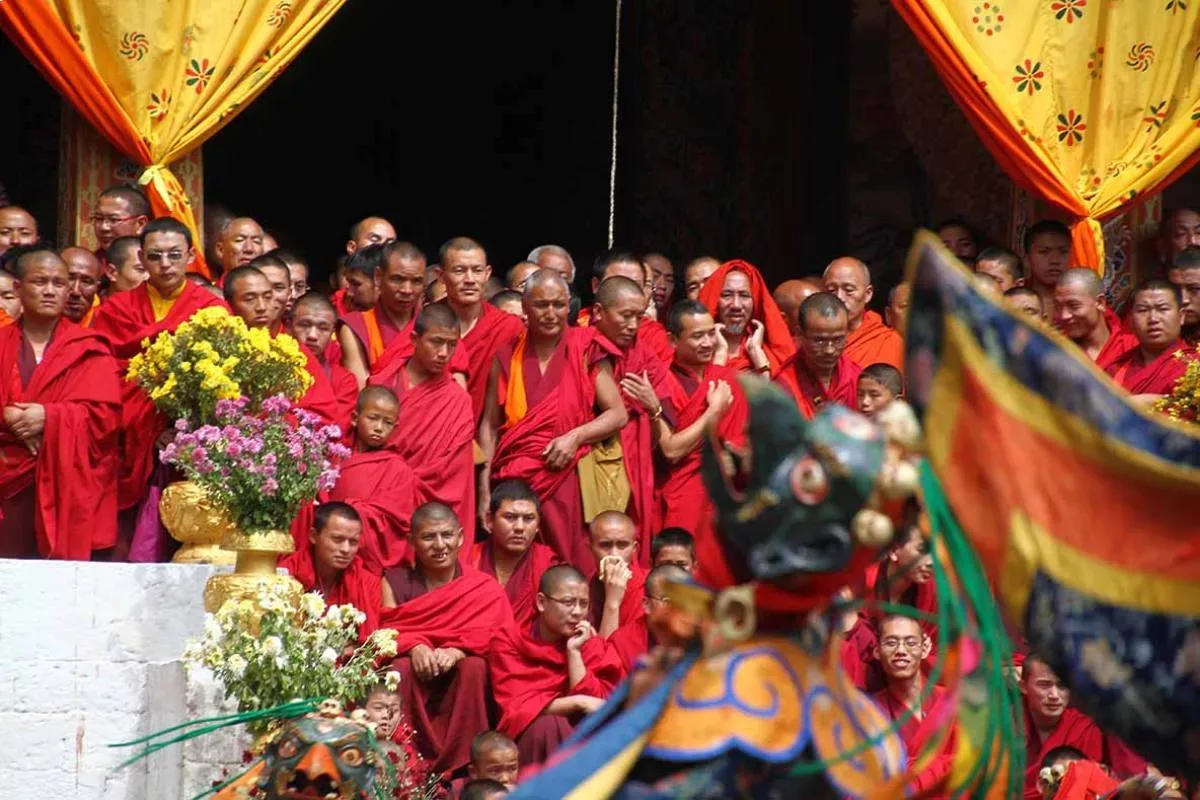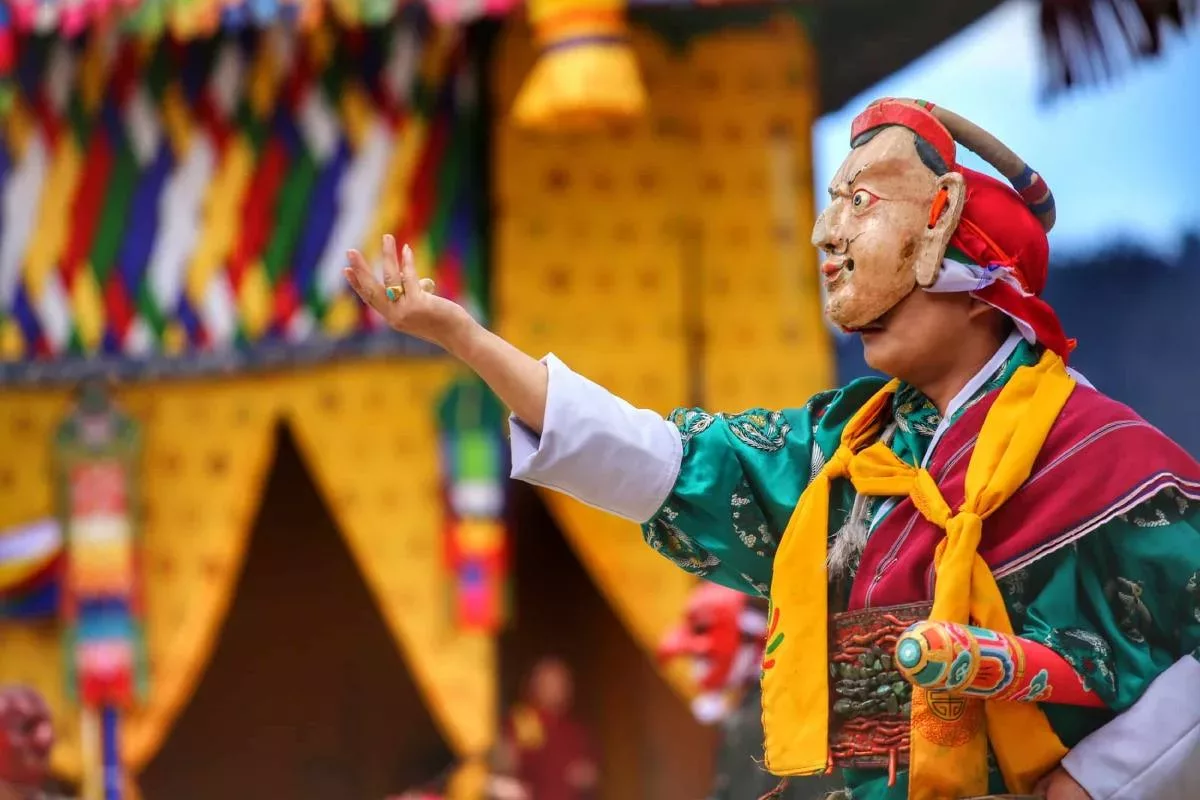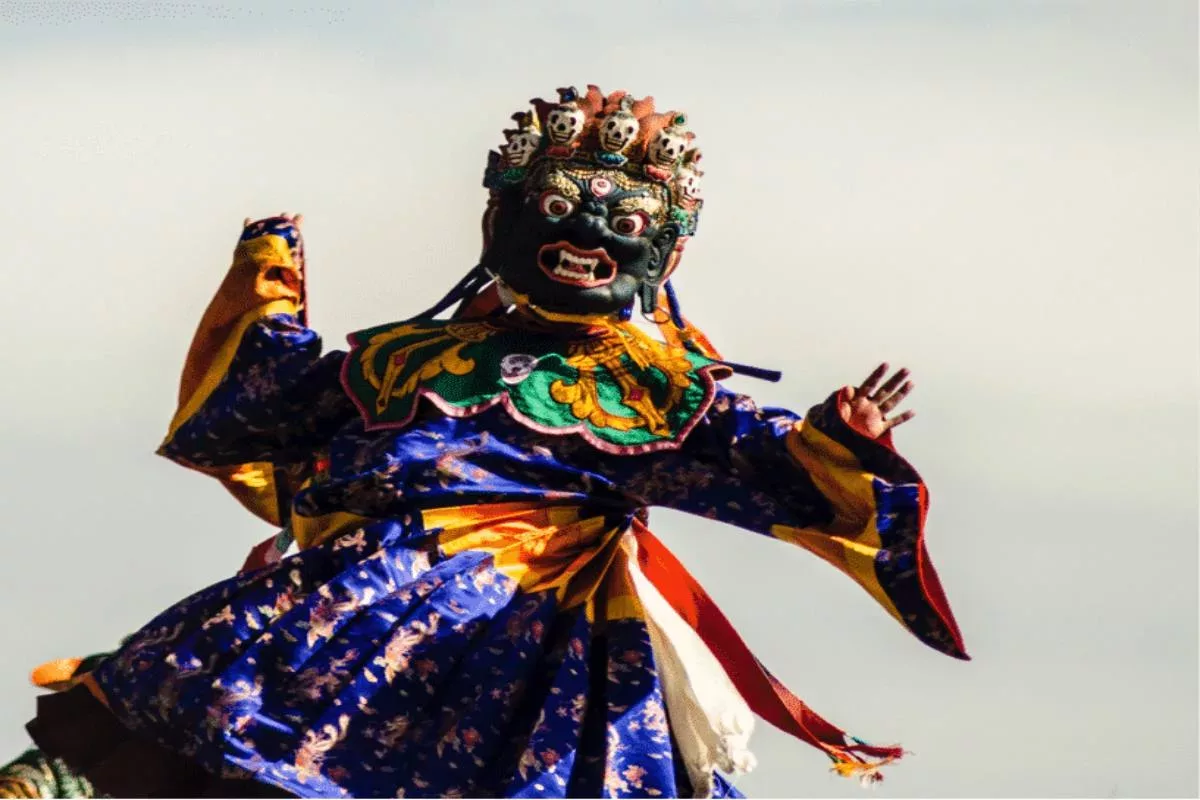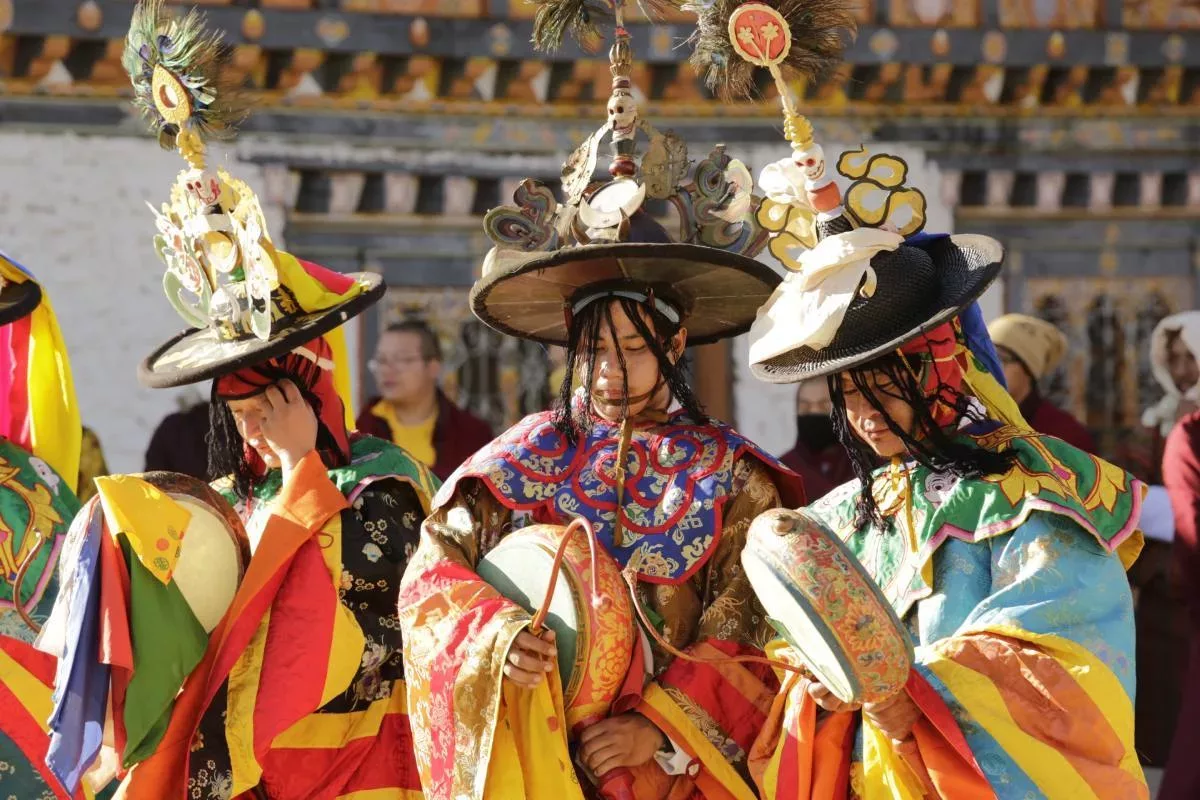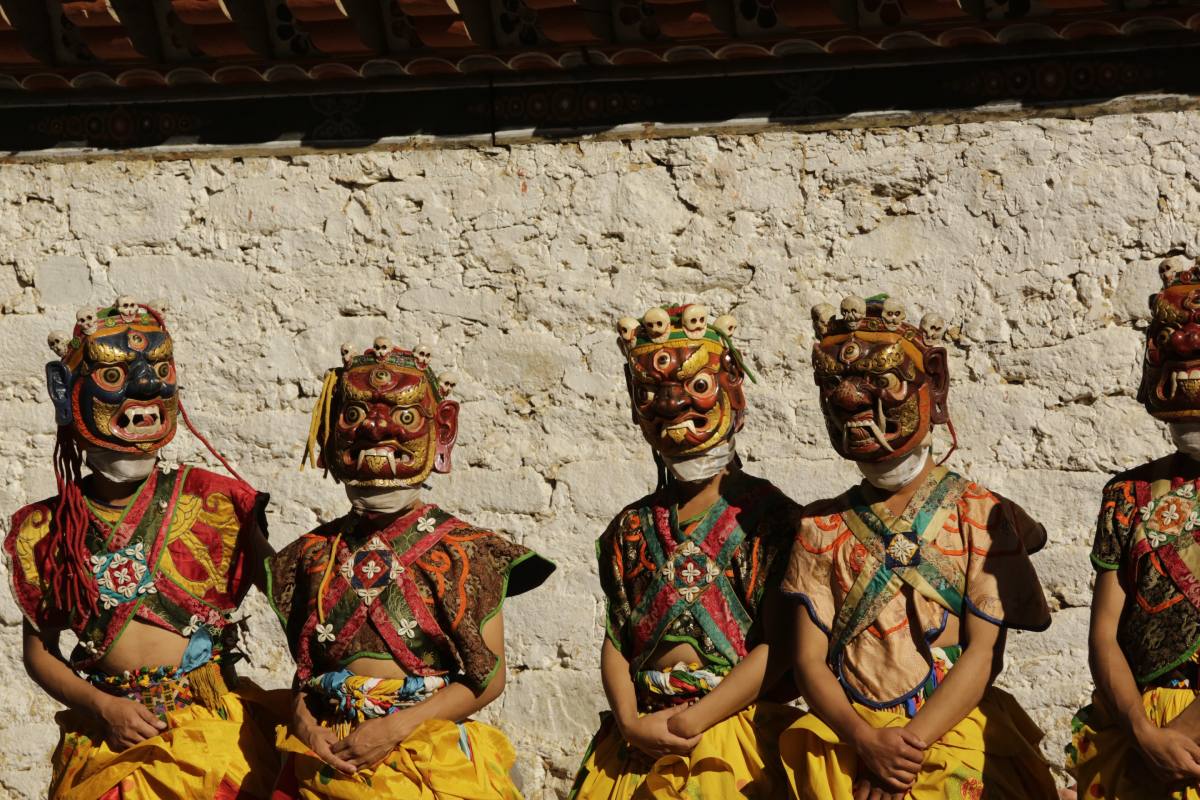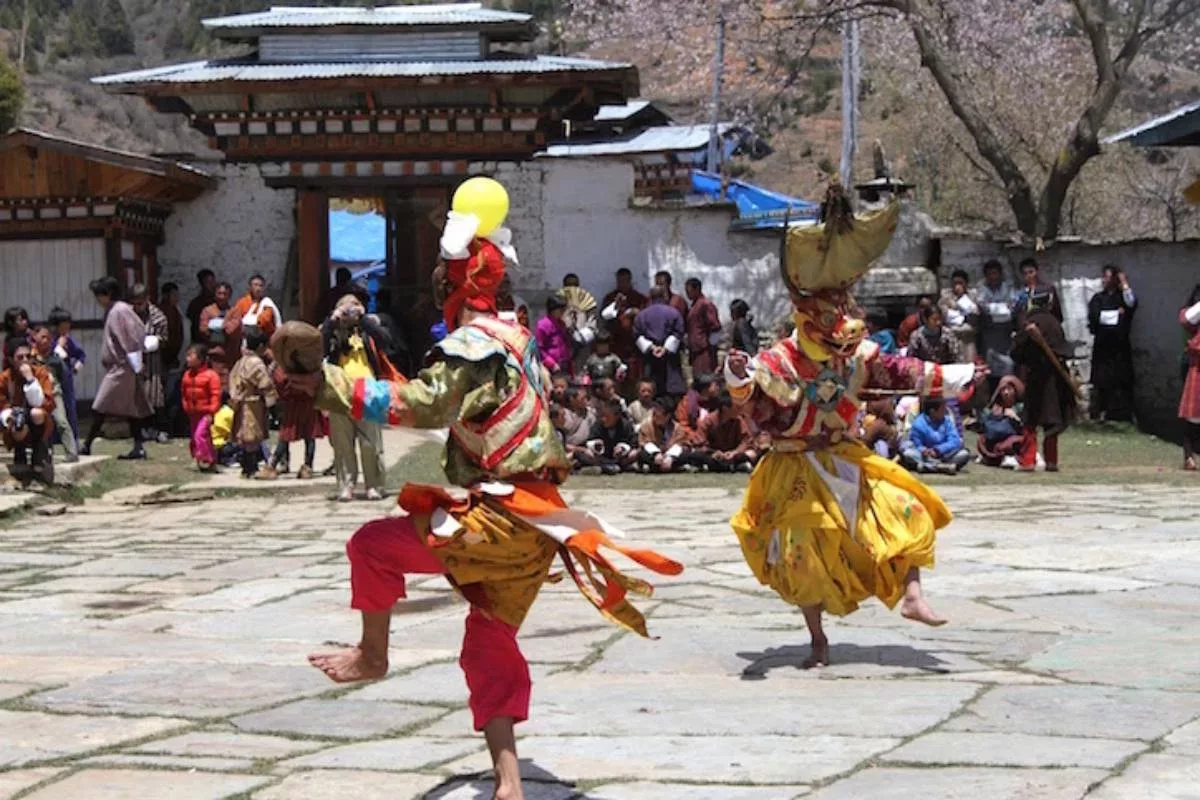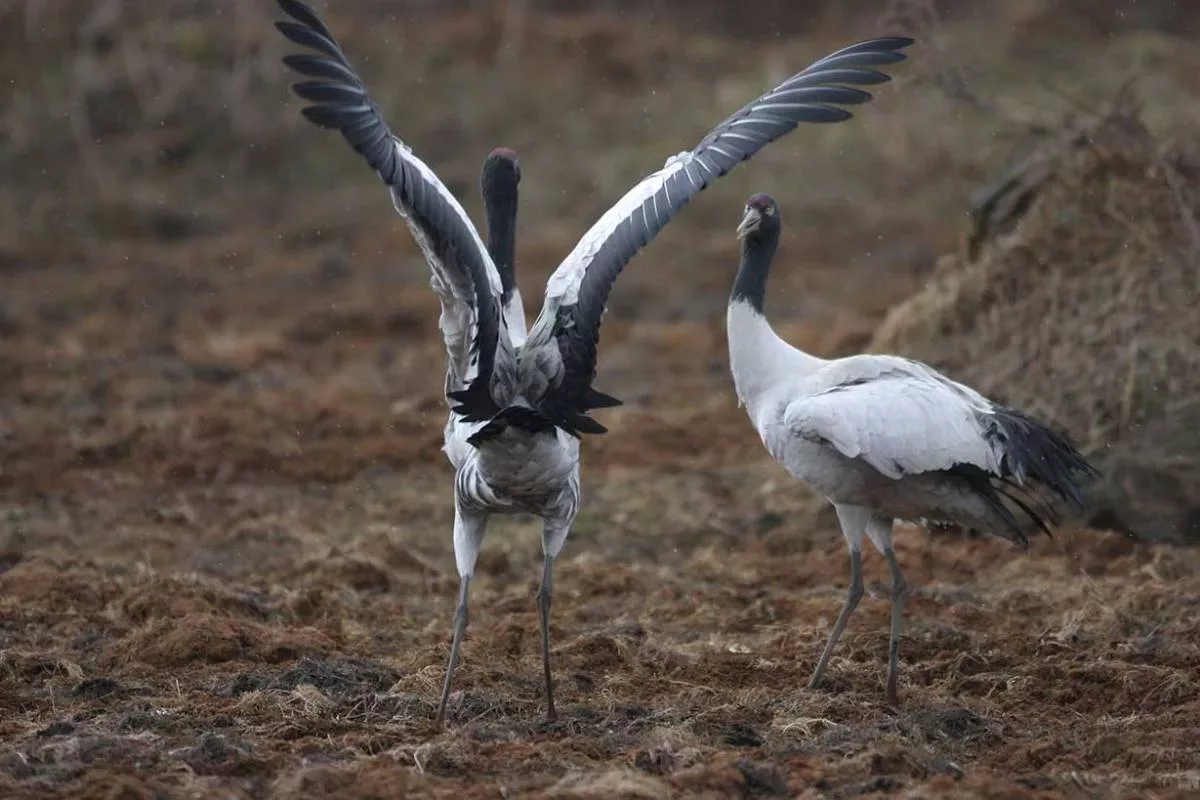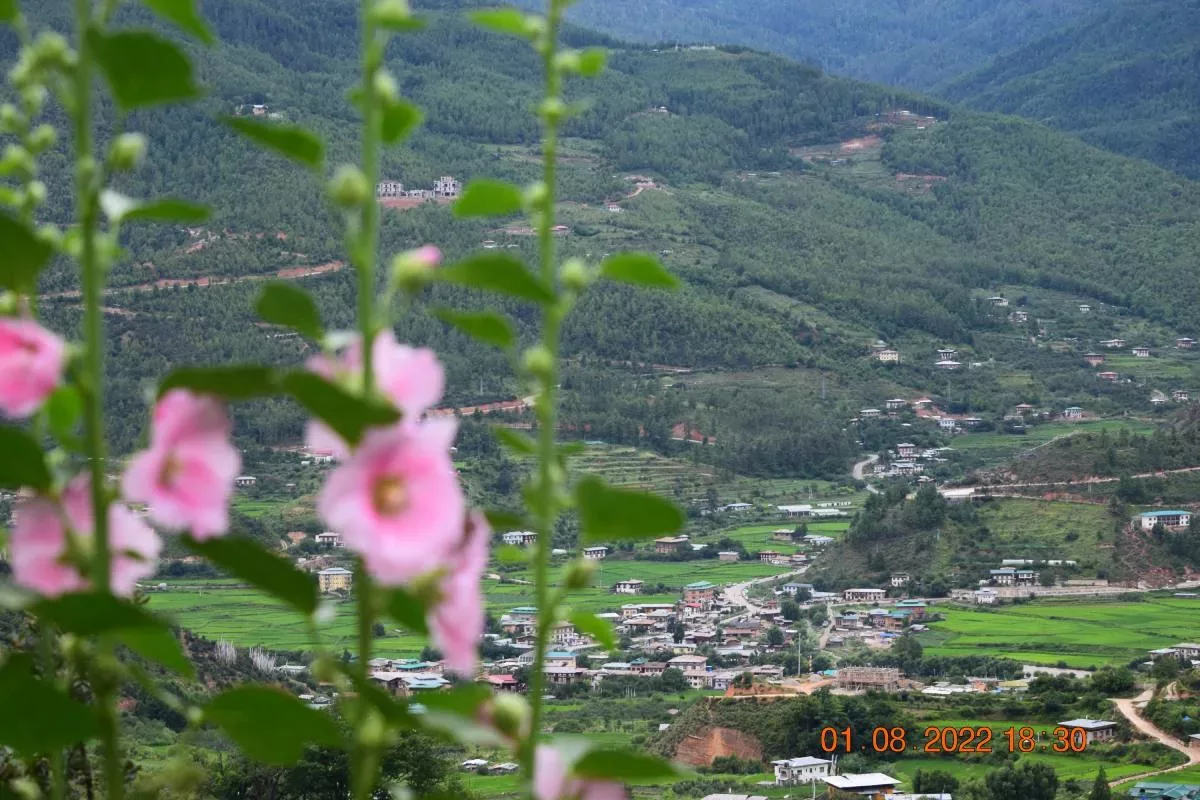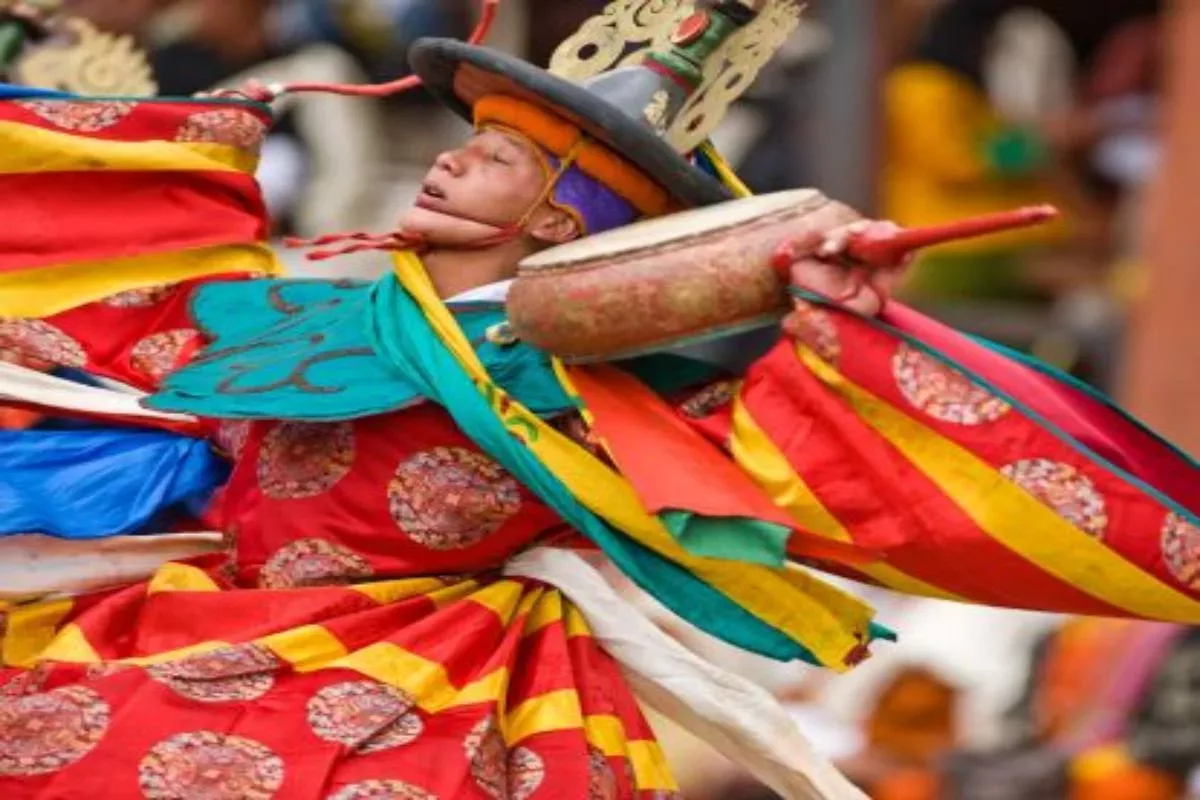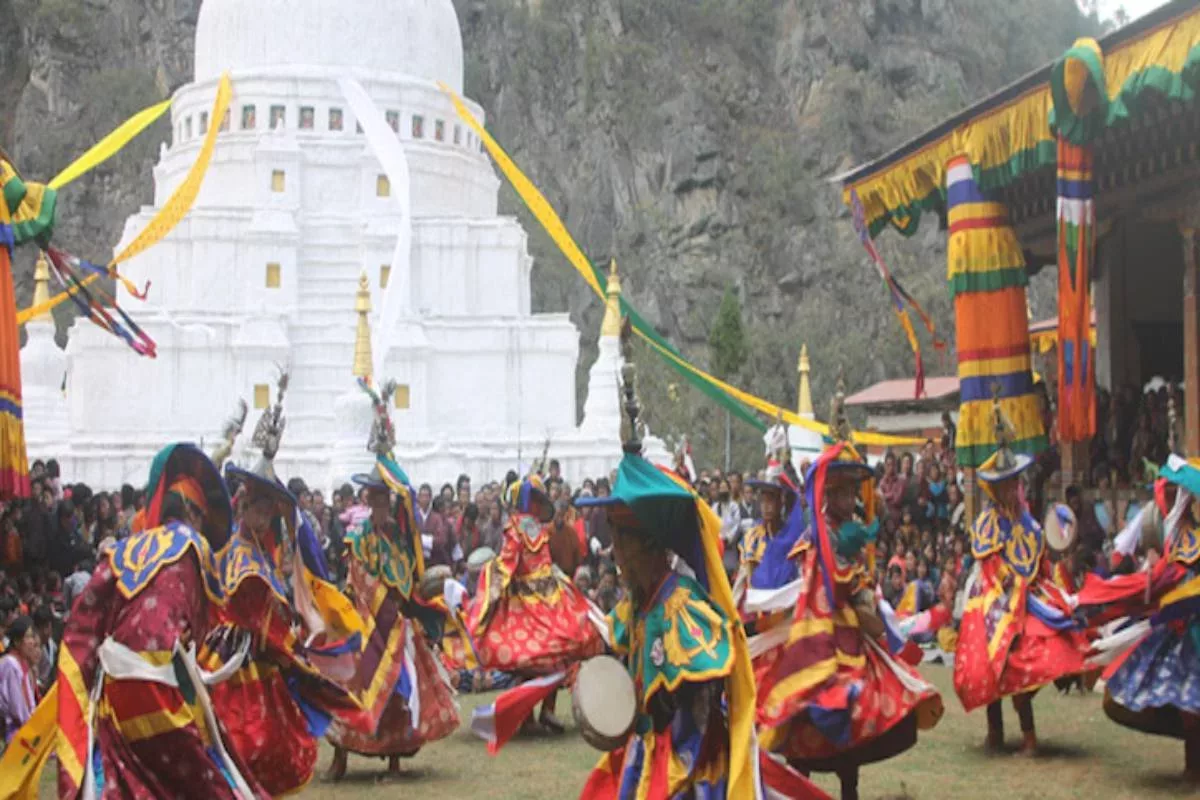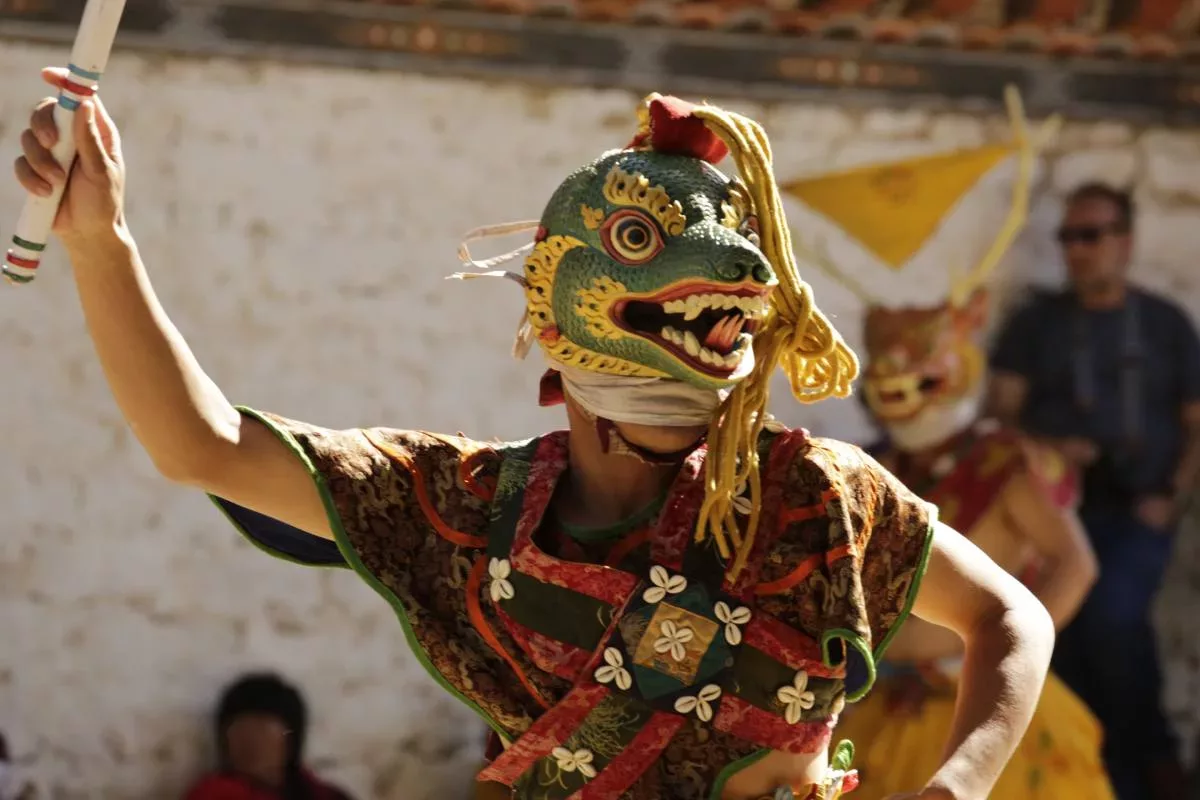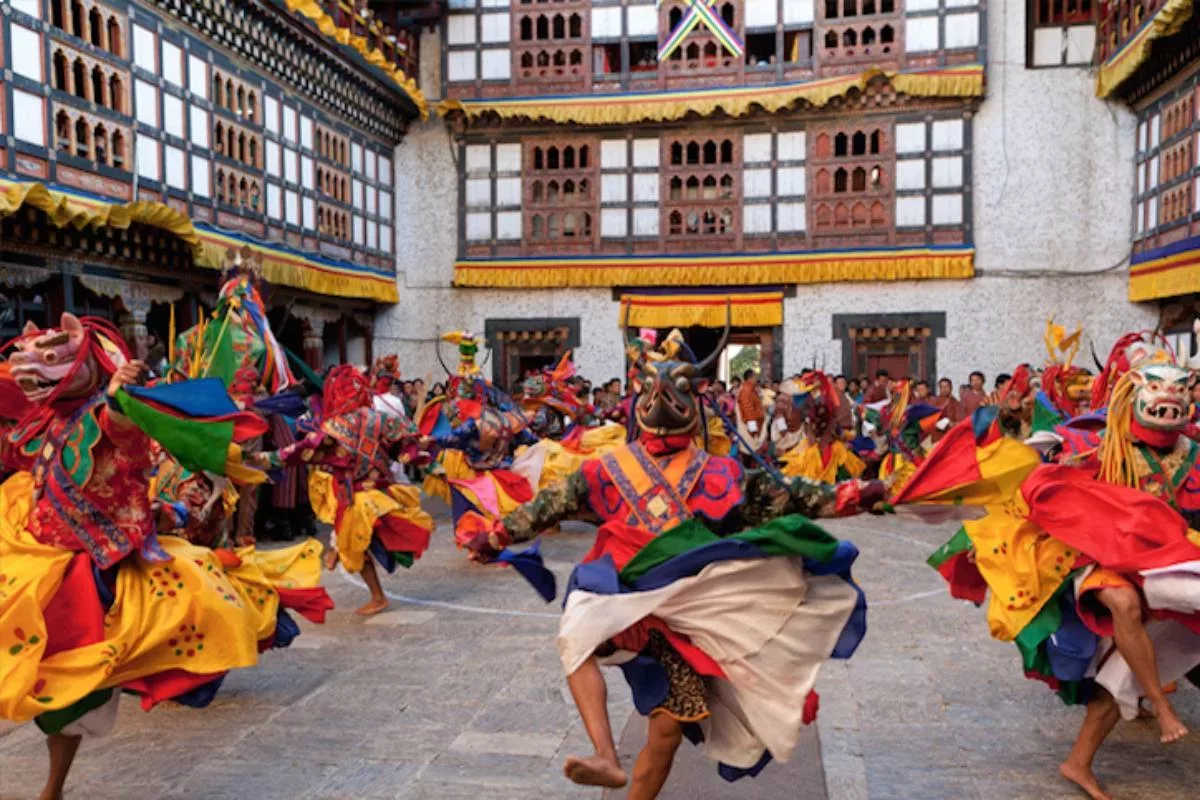Detailed Program
The flight to Paro is one of the most spectacular mountain flights in the world, with a changing panorama of the highest mountains on earth. This vague valley is home to many of Bhutan’s oldest monasteries and the country’s only International airport. After being welcomed with “Khadar” (traditional scarf), a Truly Bhutan representative will offer you the helping completion of all immigration customs formalities.
After lunch enjoys afternoon sightseeing in Paro, including a stopover at the Ta Dzong Museum housing many religious relics, works of art, and handicrafts offering a great orientation into Bhutan’s historical, cultural, and religions. Next, visit the Rimpung Dzong to see a painting of the great saint Milarepa, considered the master of meditation by the Bhutanese and believed to have attained enlightenment in a lifetime.
Dzong’s are large monasteries and district administrative centers, which were once strategic forts. Afterward, drive to the capital, Thimphu (1.5 hours) overnight.
Overnight stay at the resort in Thimphu.
Places and attractions:
- Tashichho Dzong
- Semthoka Dzong
- Dochu La Pass
- Memorial Chorten
- Changangkha Lhakhang
- Zangdopelri
- The Tallest Buddha Image
- Tango And Cheri Monasteries
- The Handicrafts Emporium
- Traditional Medicine
- Zorig Chusum Institute
- National Library
- Weekend Market
- Botanical Garden
- Thadrak Goemba
- Tashigang Goemba
- Chizhing Samtencholing Lhakhang
Accommodation options:
Breakfast at the resort and enjoy a full day of sightseeing, covering a visit to the National Memorial Chorten, completed by the Royal Queen Mother as a memorial stupa for the Third King who passed away in 1972. Continue to the 12th-century Changangkha Temple and Zulikha Nunnery. If time permits, you may visit Trashichhoedzong, ‘the fortress of the glorious religion’ housing ministries, His Majesty’s secretariat, and the central monk body.
Places and attractions:
- Tashichho Dzong
- Semthoka Dzong
- Dochu La Pass
- Memorial Chorten
- Changangkha Lhakhang
- Zangdopelri
- The Tallest Buddha Image
- Tango And Cheri Monasteries
- The Handicrafts Emporium
- Traditional Medicine
- Zorig Chusum Institute
- National Library
- Weekend Market
- Botanical Garden
- Thadrak Goemba
- Tashigang Goemba
- Chizhing Samtencholing Lhakhang
Accommodation options:
Drive over the Dochu-La pass (3,100 meters), which on a clear day offers an incredible view of Himalayan peaks before descending into balmy Punakha valley (about 3 hrs total driving time). The drive through the countryside affords a glimpse of everyday life in this most remote of Himalayan kingdoms. In the Dochu-La there are vast Rhododendron forests that grow to tree size and bloom in late April/early May covering the mountains in a riot of glorious spring colors.
Punakha was the ancient capital of Bhutan. On arrival, visit Punakha Dzong, the “Palace of Great Happiness” built in 1637 by the Zhabdrung, the ‘Unifier of Bhutan’. They situate it at the confluence of the Mo Chu and Pho Chu (Mother and Father Rivers) and is the winter headquarters of the Je Khenpo and hundreds of monks who move en masse from Thimphu to this warmer location. The three-story main temple of the Punakha Dzong is a breathtaking example of traditional architecture with four intricately embossed entrance pillars crafted from cypress and decorated in gold and silver. It was here in 1907 that Bhutan’s first king was crowned.
After lunch, enjoy a walk to Chimi Lhakhang, the shrine of the Drukpa Kunley which is also identified as also acknowledged. The Divine Madman title since he revolted against orthodox Buddhism in his time. He taught the people that religion is an inner feeling and that one doesn’t have to be an ordained monk. They also consider him is also a symbol of fertility and most childless couples go to his temple for blessing.
Overnight at your hotel in Punakha
Places and attractions:
- Punakha Dzong
- Khamsum Yulley
- Talo Goenpa
- Nalanda Buddhist College
- Chorten Nyingpo Lhakhang
- Sangchen Dorji Lhuendrup
- Limukha Village
- Ritsha Village
Accommodation options:
Morning transfer to Trongsa crossing Wangdi bridge, drive uphill touching Pela La Pass crossing the Black Mountains that divides western and central Bhutan. The roads uphill are pretty curving with sharp bends but you need not worry as our drivers are fully experienced and on the move, you will find rhododendron, magnolias, and yaks grazing and on clear days you will find Mt. Jumolhari standing still towards the west, at an elevation of 23,685feet.
Before arriving at Trongsa you will pass by Nikkarchu Bridge and here you will find white-washed stone chorten built in Nepalese style in the 18th century which lies below the road. A lama called Shida who subdued a demon that was a trouble to the valley founded this temple.
Here you will experience something interesting, as you will approach Trongsa where from the road you will view the massive Trongsa Dzong also experienced as the never reaching Trongsa Dzong this place used to be the old gateway between the east and west. If you have time, you could visit the Trongsa Dzong and Ta Dzong (Ta means watch tower in Dzongkha) built in 1652 and is now a museum that displays Buddhist art and the history of our Monarchy.
Overnight stay at the resort in Trongsa
Places and attractions:
- Punakha Dzong
- Khamsum Yulley
- Talo Goenpa
- Nalanda Buddhist College
- Chorten Nyingpo Lhakhang
- Sangchen Dorji Lhuendrup
- Limukha Village
- Ritsha Village
Accommodation options:
After breakfast, visit Trongsa Dzong. Built-in 1648, it was the seat of power over central and eastern Bhutan. Both the first and second Kings of Bhutan ruled the country from this ancient seat. They invested all four Kings as Trongsa Penlop (‘governor’) before ascending the throne, and the present Crown Prince now holds the post. The Dzong is a massive structure with many levels, sloping down the contours of the ridge on which they build it.
Then drive to Bumthang, 68 km from Trongsa, a journey of about 3 hours, over the Yutong-la pass (3,400m/ 11,155 ft.). The road winds steeply up to the pass, 28 km from Trongsa, then runs down through coniferous forest into a wide, open cultivated valley known as the Chumey valley and stop at Yatha wool weaving center well known in the region for woolen products. exploration chamkhar town by foot later in the evening.
Overnight at the lodge in Bumthang, altitude 2650m.
Places and attractions:
Accommodation options:
Bumthang valley is very open and spacious which differs from other valleys in Bhutan, its altitude ranges from 2,600 meters (8530ft) to 4000 meters (13,125 ft). We know Bumthang as heaven for hikers and trekkers and you will come across many beautiful monasteries, also important Buddhist monasteries, and pilgrimage sites. This valley is full of surprises and fascinating as almost every valley or hill has a background of interesting myths and legends about kings, Buddhist masters, and serpents. This place is important in terms of religious relics left by the famous Guru Rinpoche and his reincarnation.
Morning visit Jakar Dzong was founded by a white bird built on a ridge that overlooks the valley. “Ja” means bird and “kar” means white.
Jampey Lhakhang is also one of the 108 temples built by Songtsen Gampo the Tibetan king at the same time as Paro Kichu Lhakhang. The temple hosts Guru Joyo Jampa the future Buddha as its main statue. One of the most sacred festivals Jampey Lhakhang Drup takes place here every year. Lhakhang is the oldest temple dating to the 7th century in Bhutan.
The Kurjey Lhakhang is where the kings of Bhutan took their cremation rites. Kurjey translates into “Kur” which means body and “Jey “which means Lhakhang. We believe the big cypress tree to be the walking stick of Guru Rimpoche. The great Guru also created a holy water hole beside the temple which people frequent either for religious or medical purposes.
Wangdicholing Palace–built during the times of the first king’s father, the first King Ugyen Wangchuk as his main residence used Jigme Namgyel. Visit the town or take a walk till the bridge, though the township burnt vaguely by fire in recent times. If you are a cheese and honey lover, you could try the Bumthang cheese available and honey produced in Bumthang. later at leisure.
Overnight stay at the resort in Bumthang.
Places and attractions:
Accommodation options:
After breakfast, start to Nimalung monastery to witness its annual festival, the festival is celebrated with mask dances and historical folk dances in colorful costumes and celebrated to bring happiness, a better harvest, and prosperity to the village and the country. We spend most of the day at the festival and walking around nearby villages in this beautiful valley before proceeding to Jakar (Bumthang) over the gentlest of passes–Kiki-La, which connects Chumey to Jakar.
Bumthang is home to Bhutan’s oldest Palaces, Buddhist temples, and monasteries. The valley’s barley fields, apple groves, and meadows lay below huge hills, which climb up towards the Himalayan mountain wall separating Bhutan from Tibet. The beautiful architecture unique to Bhutan is clear in the many large farmhouses and temples. They associate Bumthang with Guru Rimpoche (Padmasambhava) and with Terton.
Overnight stay at the resort in Bumthang.
Places and attractions:
Accommodation options:
Drive upstream of the Chamkhar Chhu River to enjoy the festival at Kurjey Lhakhang. Historically, Guru Rinpoche invited her to subdue evil spirits plaguing the land. Tsehchu viewers dressed in their finest traditional clothes flock to the temple to witness the Tsehchu, with monks and laymen in masks and colorful costumes performing historical folk dances.
Later, visit Jambay Lhakhang, erected by the Tibetan king in the 7th century. It dates back to the origins of Buddhism in Bhutan and the kingdom’s oldest sanctuaries. Other places of interest are Jakar Dzong (Dzong of the white Bird) and Tamshing Lhakhang, founded in 1501 by Pema Lingpa (founder of the Nyingmapa sect) and containing interesting and ancient Buddhist wall paintings. Pema Lingpa’s heavy coat of nails is kept in the Vestibule and they permit people to try it on. If they can walk around the inner sanctuary three times while wearing it, they will forgive their sins.
Overnight at the lodge in Bumthang
Places and attractions:
Accommodation options:
After breakfast drive towards the Ura valley which is 42 kilometers from Bumthang, the road reaches the Ura Shelthangla from where a magnificent view of Bhutan’s highest crest, Gangkhar Puensum (7,500m) spot. The road then descends into Ura valley by long loops across fields and pastures. Ura’s main occupation is raising sheep and yaks, and introducing potato farming has brought a certain prosperity to people.
In Ura, they will serve to visit URA Lhakhang and picnic lunch at one of many inviting spots. While coming back, en route visits Mebartso “Burning Lake” where Terton Pema Lingpa, we believe a treasure revealer to have taken out a hidden treasure from the lake. We believe treasures to have been hidden by Guru Rinpoche in the 8th century to reveal by special persons at a propitious time and later driven back to the hotel for overnight.
Overnight stay at the lodge in Bumthang
Places and attractions:
Accommodation options:
After breakfast, start to Punakha via Phobjikha valley. Drive through the dense forests of the Phobjikha Valley you arrive at Phobjikha village where you see the Gangtey Monastery and visit the temple. Phobjikha is part of the beautiful Jigme Singye Wangchuck National Park (formerly known as Black Mountains National Park), one of Bhutan’s most important nature sanctuaries.
We still know Phobjikha valley is still the home of the black-necked cranes. These endangered birds fly to this plane during late fall through winter from Tibet and fly back in spring. The village is an amazing attraction, and it likewise provides opportunities to enjoy hiking on moderate nature trails and scrutinizing the lowland and its beauty. You can also visit the Gangtey monastery.
After exploring around and visiting sites we will take you to a farmhouse for halting the night. A farmhouse is a perfect way to experience the authentic traditional way of life. They will serve you dinner which you will eat with a family of the house and like one big family and you will rest. This is one of the most untouched regions of Bhutan and is only just opening its doors to the outside earth.
Overnight stay at the lodge in Phobjikha.
Places and attractions:
- Dargay Goemba
- Gangtey Gompa
- Temple Of Sha Radap
- Gaselo & Nahee Village
- Adha And Rukha Village
- Shaa Region Of Wangdiphodrang
- Bhey Langdrag Nye
Accommodation options:
Further, driving through blossoming hills and pine forests, we arrive at Dochula pass (3,100m) for another opportunity to get panoramic views of the eastern Himalayan range, including Bhutan’s loftiest peak Gangkhar Puensum. Further, continue to drive towards Paro via Thimphu. After lunch in Paro, visit the National Museum of Bhutan which displays the Bhutanese way of life, art, artifacts, and natural history.
Followed by Rinpung Dzong, a fortress monastery overlooking the Paro valley has a long history. Built in 1644 by Ngawang Namgyal, the fortress monastery served as an effective defense against many invasion attempts by the Tibetans.
Overnight at the lodge in Paro.
Places and attractions:
- Rinpung Dzong
- Drukgyel Dzong
- Taktshang
- Kyichu Lhakhang
- Kila Gompa
- Dungtse Lhakhang
- Tachog Lhakhang
- Dzongdrakha
Accommodation options:
Start the day early with a one-hour drive to Haa via the Chele-la pass (3988 meters). You will have a superb view of the mountains Jumolhari and Kichu Drake, and if the weather is favorable, you will stop here to stroll around.
Haa remains one of the least visited areas in the country and keeps the air of an unspoiled, primeval forest. Also identified as Hidden-Land Rice valley. It is still fairly undiscovered by tourists, as it has not been long. It opened Haa for a tourist. The enchanting Haa valley boasts two large temples: The White (Lhakhang Karpo) and the Black (Lhakhang Nagpo) Temple. These are well worth a visit; join the pilgrims there on foot. Return to Paro in the late afternoon.
Overnight stay at Paro.
Places and attractions:
Accommodation options:
After breakfast, hike up to Taktsang Temple, also recognized as ‘Tiger’s Nest’. The climb up to the viewpoint will take around one and a half hours and from there you will enjoy a spectacular view of the monastery clinging to the side of the cliff. Stop for refreshment at the View Point Cafeteria. Then walking further up to the monastery will take about 1 hour.
They state that in the 8th century Guru Rinpoche flew on the back of a tigress from eastern Bhutan to this place and meditated in a cave here for 3 months. The principal Lhakhang (Temple) of the present monastic complex dates from 1692. Taktsang was damaged severely by fire in 1998 but has now been fully restored to its former beauty. After visiting the monastery, walk back down to the trail on the way stop for lunch at the viewpoint cafeteria, and then walk further down to the drive point.
In the evening relax and stay overnight at the resort in Paro.
Places and attractions:
- Rinpung Dzong
- Drukgyel Dzong
- Taktshang
- Kyichu Lhakhang
- Kila Gompa
- Dungtse Lhakhang
- Tachog Lhakhang
- Dzongdrakha
Accommodation options:
After breakfast, depart Paro for your onward journey
Frequently Asked Question
All international tourists, except Indians, Bangladeshis, and Maldivians, require a visa, which must be obtained in advance through a licensed Bhutanese tour operator or one of their international partners. Before travel, you must obtain visa clearance through your tour operator, and you cannot purchase air tickets to Bhutan without it.
There is nothing to worry about because there are numerous airports from which to fly into Bhutan. On the other hand, our representatives will provide you with information that will guide you on how to get into Bhutan. Some of the closest and easiest flights to Bhutan are from Bangkok, Delhi, Kolkata, Bagdogra, Bodh Gaya, Dhaka, Kathmandu, Guwahati, Singapore, and Mumbai. Bhutan currently has two airlines, Drukair and Bhutan Airlines. There is another way to enter Bhutan, which is by land. You can enter Bhutan through three different points: Phuntsholing, Gelephu, and Samdrup Jongkhar.
You shouldn’t be concerned about your payment because the Tourism Council of Bhutan is in charge of all regulations and monitoring of all travel agents in Bhutan. When we receive your payment, we deposit it into a TCB account to process your VISA, and the money is held by the TCB until your departure. Your tour payment can only be transferred by wire to Bhutan National Bank Limited and then to the ultimate beneficiary M/s. Bhutan Truly. It takes more than three working days for your payment to be credited to our account.
The Bhutanese currency is called the Ngultrum. Its value is linked to the Indian Rupee, which is also a legal tender. However, Indian notes in denominations of Rs. 500 and Rs. 1000 are not accepted.
There is no need to be concerned about the food because there are well-trained chefs who prepare amazingly delicious western cuisine. However, when it comes to Bhutanese cuisine, chili is an essential component of nearly every dish prepared in Bhutanese society and is so important that most Bhutanese people would not eat a meal without it. The main course is rice, which is accompanied by one or two side dishes of meat or vegetables. The most popular meats are pork, beef, and chicken. Many restaurants throughout the country serve a diverse range of Western and Indian cuisine
There is no annual limit on the number of tourists admitted to the country. To protect our culture, traditions, and natural environment, the government has implemented a strict “High Value, Low Impact Tourism” policy. This policy aims to attract discerning tourists who will respect Bhutan’s unique culture and values while also providing visitors with an unforgettable one-of-a-kind experience.
- Inclusion
- Exclusion
- Insurance
- Airport pick-up and drop-off by private vehicle.
- 3-star accommodation (4 & 5 stars may require an additional premium update).
- Bhutan visa fee – including all necessary processing
- Route Permit
- Three meals per day during your stay in Bhutan
- A licensed Bhutanese tour guide
- All land transportation by private vehicle
- Camping equipment and haulage for trekking tours
- Sightseeing as per itinerary
- Monuments entrance fees where applicable
- Drinking water
- All internal taxes and charges
- A sustainable development fee of $200. (This sustainable development fee goes towards free education, free healthcare, and poverty alleviation, along with the building of infrastructure.)
- Airfare & Travel Insurance
- Expenses of personal nature, Tips to guides and drivers
- Expenses occurred due to unavoidable events i.e. road wrecks, flight delays etc.
Package does not include insurance of any kinds, and that you are required to obtain separate coverage from your home country before your trip begins.

